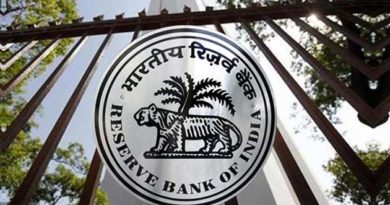Combating Cyber Threats in Banking: Prevention, Detection, and Response Mechanisms
Introduction:

In the digital age, the Banking sector has undergone a remarkable transformation, leveraging technology to offer seamless and efficient services to customers across the globe. However, with this advancement comes an unprecedented rise in cyber threats that pose significant risks to financial institutions, their customers, and the global economy. The importance of combating cyber threats in Banking cannot be overstated. A single security lapse can erode customer trust, result in substantial financial losses, and invite regulatory scrutiny. As Banks serve as custodians of not only financial assets but also vast amounts of confidential information, their vulnerability to cyber risks makes them prime targets for malicious actors. Consequently, the industry is compelled to adopt comprehensive mechanisms to prevent, detect, and respond to these threats effectively. This essay explores the nature of cyber threats in banking and delves into the prevention, detection, and response mechanisms that institutions employ to safeguard.
The Nature of Cyber Threats in Banking:
Cyber threats targeting banks are varied and evolving, leveraging sophisticated technologies to breach security systems. Common cyber threats include:
Phishing and Social Engineering Attacks: Cybercriminals manipulate bank employees or customers into divulging sensitive information like login credentials, often through fake emails or messages.
Malware and Ransomware: Malicious software can be deployed to infiltrate bank systems, steal data, or hold systems hostage until a ransom is paid.
Distributed Denial of Service (DDoS) Attacks: By overwhelming a bank’s online systems with a flood of traffic, attackers can cause significant downtime and disruption.
Insider Threats: Employees or contractors with malicious intent or inadequate security practices pose internal risks to banking systems.
Advanced Persistent Threats (APTs): These are prolonged and targeted attacks where intruders infiltrate a network to steal information over time.
Supply chain attacks: An attack that breaches a victim through a compromised third-party vendor.
Account takeover: An attack that uses stolen or guessed credentials to log into corporate systems.
Vulnerability exploitation: An attack that exploits weaknesses in an organization’s applications.
Bank drops: An attack where stolen funds are stored in fake bank accounts to hide the location from authorities.
Man-in-the-middle (MITM) attack: A cyber-attack where a criminal inserts themselves between two parties in a communication channel to steal data.
Crypto-jacking: Unauthorized use of banking systems for mining crypto currencies, often slowing down operations and increasing infrastructure costs.
Injection attack: A cyber-attack that exploits vulnerabilities in an application to inject malicious code or data into a system. This can allow attackers to access data, execute unauthorized commands, or manipulate the system’s operations.
In the first four months of 2024, Indians lost more than ₹1,750 crore to cyber criminals, reported through over 740,000 complaints on the National Cybercrime Reporting Portal. Given the increasing digitalization of banking services, including mobile and online banking, the attack surface has grown exponentially, necessitating robust mechanisms for prevention, detection, and response.
Prevention Mechanisms:
Prevention remains the cornerstone of a comprehensive cybersecurity strategy. Key preventive measures include:
Strong Authentication and Authorization Protocols: Banks have increasingly adopted multi-factor authentication (MFA) to ensure that access to systems and accounts is tightly controlled. Biometrics, such as fingerprint or facial recognition, and token-based systems provide additional layers of security.
Secure Software Development Practices: Adopting secure coding standards and practices helps minimize vulnerabilities in banking applications. Regular code reviews, penetration testing, and the use of automated vulnerability scanning tools are crucial.
Employee Training and Awareness: Human error is often the weakest link in cybersecurity. Banks invest in regular training programs to educate employees about recognizing phishing attempts, secure handling of sensitive data, and adherence to cybersecurity protocols.
Network Segmentation and Perimeter Defence: Segmenting networks limits the movement of attackers if a breach occurs. Firewalls, intrusion prevention systems (IPS), and secure gateways serve as the first line of defence against unauthorized access.
Data Encryption: Encryption ensures that sensitive data remains unreadable even if intercepted. Banks employ end-to-end encryption for transactions and encrypt stored data to protect customer information.
Vendor and Third-Party Risk Management: Banks rely on third-party vendors for various services, increasing the risk of supply chain attacks. Conducting thorough due diligence and requiring vendors to comply with stringent security standards are essential steps in mitigating these risks.
Detection Mechanisms
While prevention aims to block threats, detection focuses on identifying and addressing breaches in real time. Advanced detection mechanisms include:
Real-Time Monitoring and Threat Intelligence: Banks deploy security information and event management (SIEM) systems to monitor network activity in real time. These systems utilize machine learning to identify anomalies that may indicate cyber-attacks.
Behavioural Analytics: Behavioural analytics tools detect unusual patterns in user activity, such as irregular login times, unusual transaction volumes, or attempts to access restricted areas of the network.
Honeypots and Deception Technology: Honeypots are decoy systems designed to lure attackers, providing valuable insights into their tactics while protecting actual systems. Deception technologies further enhance detection by mimicking real environments.
Threat Intelligence Sharing: Collaboration between banks and cybersecurity organizations enables the sharing of threat intelligence. Platforms like the Financial Services Information Sharing and Analysis Centre (FS-ISAC) facilitate this exchange, helping banks stay informed about emerging threats.
Endpoint Detection and Response (EDR): EDR tools monitor endpoints such as ATMs, mobile devices, and employee workstations for suspicious activity. These tools provide detailed forensic data to analyse breaches.
Response Mechanisms:
When prevention and detection fail, an effective response is critical to minimizing damage. Banks employ comprehensive incident response plans to address breaches promptly:
Incident Response Teams: Dedicated incident response teams are trained to handle cyber incidents. These teams include cybersecurity experts, legal advisors, and communication specialists to manage technical, regulatory, and reputational aspects.
Containment Strategies: Quickly isolating affected systems prevents the spread of malware or unauthorized access. Segmentation and pre-defined protocols for shutting down specific operations are critical.
Forensic Analysis: Post-incident forensic analysis determines the attack’s root cause and scope. This information helps improve defence and supports legal actions against perpetrators.
Communication Plans: Transparent communication with stakeholders, including customers, regulators, and the media, is essential to maintaining trust during and after a cyber-incident.
Recovery and Business Continuity: Banks maintain detailed recovery plans to restore operations swiftly. Regular backups and redundant systems ensure minimal downtime and data loss.
Emerging Trends and Technologies
The dynamic nature of cyber threats necessitates constant innovation. Emerging technologies and strategies in combating cyber threats include:
Artificial Intelligence and Machine Learning: AI and machine learning are transforming cybersecurity by enabling banks to predict, detect, and respond to threats more efficiently. These technologies can analyse vast amounts of data to identify patterns indicative of cyber-attacks.
Block chain Technology: Block chain offers enhanced security for financial transactions through its decentralized and tamper-proof nature. Banks are exploring block chain for secure payment systems and fraud prevention.
Zero Trust Architecture: Zero Trust models operate on the principle of “never trust, always verify,” ensuring that every access request is authenticated and authorized, regardless of its origin.
Quantum-Resistant Cryptography: As quantum computing advances, traditional encryption methods may become vulnerable. Banks are investing in quantum-resistant algorithms to prepare for this eventuality.
Regulatory and Collaborative Efforts
Governments and regulatory bodies play a crucial role in enhancing the cybersecurity posture of Banks. Regulations such as Reserve Bank of India ensure strict security practices and encourage collaboration. Collaborative efforts among Banks, governments, and cybersecurity organizations are also vital. Initiatives such as joint cyber drills, public-private partnerships, and global forums enable the Banking industry to pool resources and knowledge against common threats.
The Reserve Bank of India (RBI) plays a key role in preventing cyber-attacks on Banks in India by requiring banks to implement cybersecurity measures.
Role of RBI:
Issuance of Guidelines: The RBI issues guidelines to Banks on cybersecurity, including how to protect customer data and prevent data leaks.
- Guidelines on Data leak prevention: Banks should have a strategy to prevent data leaks, including data in motion, data at rest, and data processed on endpoint devices.
- Guidelines on Security controls: Banks should implement security controls to protect against threats like DDoS attacks.
- Guidelines on Data leak prevention: Banks should have a strategy to prevent data leaks, including data in motion, data at rest, and data processed on endpoint devices
- Guidelines on Security controls: Banks should implement security controls to protect against threats like DDoS attacks
- Guidelines on Incident management: Banks should have a process for managing cybersecurity incidents
- Guidelines on Vendor risk management: Banks should manage security risks associated with outsourced arrangements
- Guidelines on Vulnerability assessment: Banks should conduct vulnerability assessments, penetration tests, and red team exercises
Monitoring: The RBI requires banks to continuously monitor for cyber threats and report any incidents
Cyber Security Operations Centre (C-SOC): The RBI requires banks to establish a C-SOC to detect and respond to threats in real time
Cybersecurity policies: The RBI requires banks to create cybersecurity policies that adhere to IT and IS security policies
Education: The RBI’s Orange Team educates employees and stakeholders on cybersecurity best practices
Challenges in Cybersecurity:
Despite advancements, banks face several challenges in combating cyber threats:
Sophistication of Attacks: Cybercriminals continually develop more advanced methods, often outpacing defence.
Resource Constraints: Smaller banks may lack the financial and technical resources to implement robust cybersecurity measures.
Regulatory Compliance: Navigating a complex landscape of regulations across jurisdictions can be burdensome.
Customer Behaviour: Customers who use weak passwords or fall victim to phishing attacks expose themselves and banks to risks.
Talent Shortage: The global shortage of skilled cybersecurity professionals exacerbates the challenges of maintaining robust defences.
Conclusion:
The rapid growth of digital banking has transformed the financial industry, offering unparalleled convenience and efficiency. However, this evolution has also exposed banks to an increasing number of sophisticated cyber threats. The ever-evolving landscape of cyber threats poses a significant challenge to the banking sector, demanding a multifaceted approach to ensure security and resilience. Prevention, detection, and response mechanisms are no longer optional but essential pillars of a robust cybersecurity strategy. By leveraging cutting-edge technologies, adhering to stringent regulatory requirements, and fostering collaboration across the industry, banks can significantly enhance their defences against cyber-attacks. Equally critical is the emphasis on cultivating a cybersecurity-first culture, ensuring that employees, customers, and stakeholders remain vigilant and informed. It is important to adopt advanced technologies like artificial intelligence and machine learning for threat detection, implement multi-layered security protocols, integrate proactive strategies, rapid incident response framework and foster a culture of cybersecurity awareness among employees and customers. As the threat environment continues to evolve, proactive investment in cybersecurity infrastructure and continuous innovation will be key to safeguarding the trust and integrity that underpin the Banking system. Ultimately, a secure Banking ecosystem not only protects financial assets but also sustains confidence in the global financial system.
By:
Dr. Deepak Kumar
Chief Manager (Research)
Union Learning Academy C&P
Union Bank of India, Lucknow
Mail: [email protected]
Mob: 9995687254




